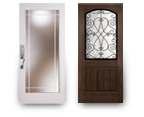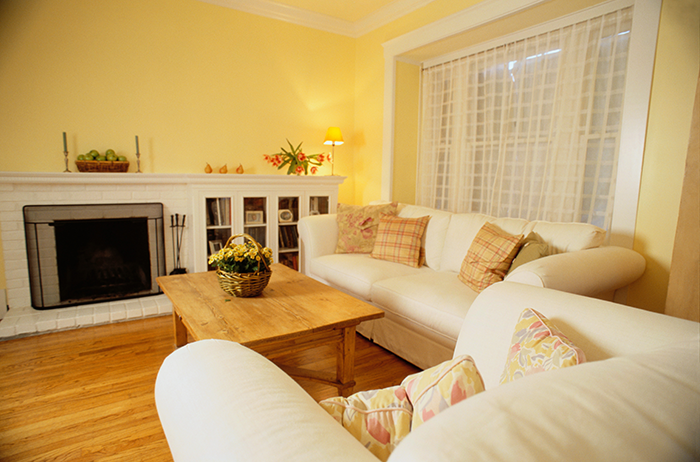
2015 top home trends for a green makeover
Bright bold rooms
One of this year’s top home trends is to add a blast of color. But can stinky paint really be environmentally friendly? The smell of fresh paint in a renovated home or apartment can bring back memories… of headaches. Traditional interior house paints give off strong airborne chemicals not only while you are doing the painting, but for years afterwards. These are called volatile organic compounds or VOC’s. They are known to cause headaches, dizziness and other illnesses, and contribute to indoor air pollution.
Over the past few years, major paint brands such as Sherwin Williams and Benjamin Moore have developed lines of “no” or “low” VOC paints. These are water based paints with less than half of the VOC’s of regular paint (0-200 grams vs regular paint at approx. 400). Benjamin Moore’s Natura® paint line claims zero VOCs which would make it the greenest paint. To learn more about VOC’s and find safer paints, go to the handy Greenguard Certification site. GreenGuard helps consumers to “identify interior products and materials that have low chemical emissions, improving the quality of the air”. It is a division of UL (Underwriters Laboratories), the non-profit who tests and certifies US appliances and equipment for safety.
Insulate with plants
Adding insulation to save energy is great for conservation as it is, but that benefit increases when using cellulose insulation. Cellulose is the most eco-friendly insulation because it is made of up to 85% recycled paper.
Instead of harmful chemical fire retardants and insecticides, it is typically treated with borate, a natural compound (from boron), that does the job. Boron is safe and is an essential micronutrient used by plants to enable them to grow and flower. Borates are now commonly used in wood building materials, including decks, siding, furniture, and in this insulation. As an additional eco-benefit, cellulose insulation is “blown in”, literally hose fed into your space, so there is no waste created in the install process.
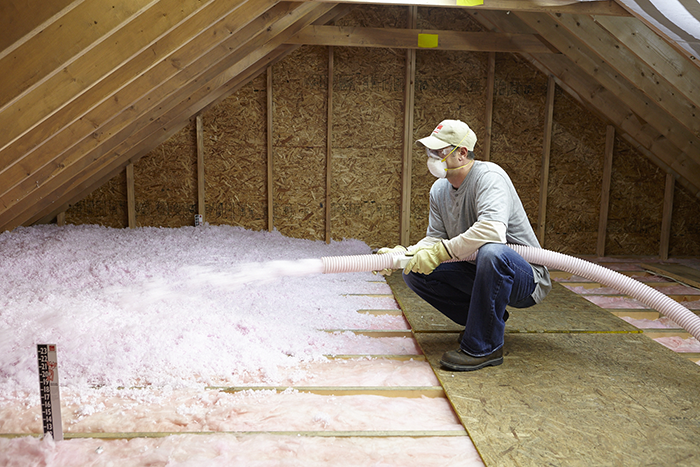
Lighting inspired by nature
Decorative fixtures can transform the look of your home. Many designers and lighting retailers highlight natural styles and functional art derived from the world around us. These styles from nature use wood, shells, mica, rattan or wicker, and glass. They are both beautiful and promote the use of renewable materials.
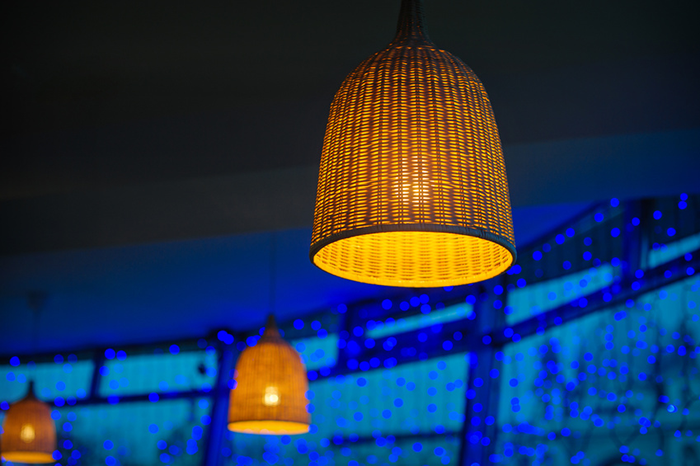
Whether its wall sconces, chandeliers, recessed spot lights or lamps, energy saving can also come from the bulbs you choose. All of today’s bulb choices are more energy efficient than the old incandescent bulb. LEDs are the most efficient at 75% energy savings and also the longest lasting, lighting your way for 25 years. LED light is a different color, and can seem brighter and cooler than the old 60, 75 or 100 watt bulb. Manufacturers now put helpful labels on them such as “equivalent to a 75 watt bulb” but that only refers to wattage, not light color. If you prefer the traditional warmer light of incandescent bulbs, try eco-incandescent light bulbs. These have 28% energy savings vs old incandescent bulbs, but have the same color, sizes and price point.
Recycled or renewable doors
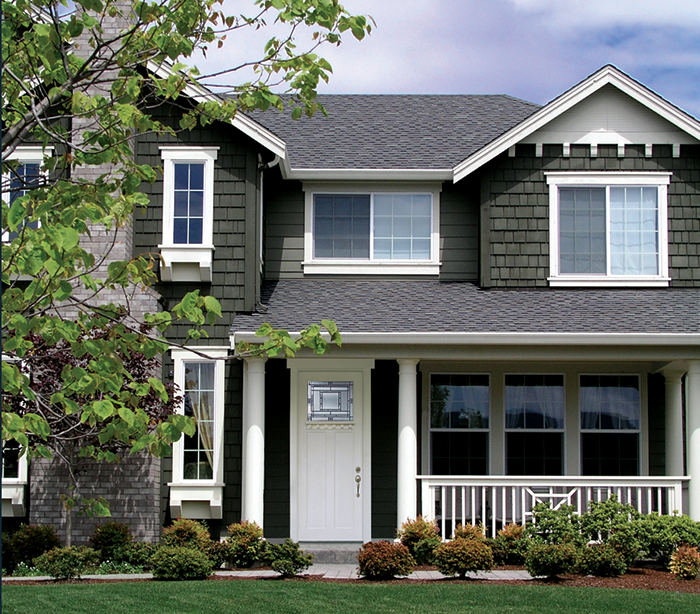
According to Remodeling Magazine’s 2015 study, replacing your entry door is the number one home upgrade to increase resale value . There are several eco-friendly replacement door options, starting with fiberglass doors. Fiberglass is made of a combination of vinyl, which is a plastic, and silica from sand, which is natural. This makes for a partially green but really strong, long lasting door. One that is ready for our Northwest weather.
Wood is a beautiful, renewable door material but wood doors are not always 100% green. ‘Solid–core’ doors have a fiber composite or non-wood core inside of a wood veneer exterior. This makes the door less prone to warping, but the tradeoff is that the core materials may include chemical adhesives or plastics. ‘Solid-wood’ doors are typically made up of wood panels that are glued together. Recently, zero VOC and formaldehyde free glues, plus water-based insect and rot treatments have become available, increasing the benefit from choosing wood. Rogue Valley wood doors are made from sustainably managed forests, adding an additional layer of environmental conscientiousness.
Looking for a DIY project? Vintage wood doors can be beautifully refinished. Used wood doors with classic hardware can be found at local Seattle resale retailers such as Second Use Building Materials, Earthwise Salvage, Ballard Reuse, and at Re-Store, which is now located in Bellingham.
Washington Energy offers energy saving products and services including insulation and doors. Contact us to learn more.
Related products
- 2016
- AC
- AC Installation
- AC Units
- AFUE
- air conditioing
- air conditioner
- air conditioning
- air conditioning maintenance
- air conditioning service
- air conditioning tune-up
- air duct
- air duct cleaning
- air handlers
- air pollution
- Air Purification System
- air purifier
- Air Sealing
- angie's list
- award
- basement Finishing
- Bathroom remodel
- BBB
- BBB Accredited Business
- before and after
- Best air conditioner
- best filters
- best generator
- best locks
- best water heater
- best window install
- boilers
- bryant
- Bryant AC
- bryant furnace
- bryant heat pump
- christmas lights
- clean air
- clothes drive
- Clothes For Kids
- coat drive
- combi-boiler
- comfort
- community
- Construction
- contractor
- contractors
- Cooling
- Cooling equipment
- Coronavirus Protection
- custom
- daikin
- deals
- discounts
- DIY
- Donation
- Donations
- door hardware
- door installation
- door replacement
- Door Transformations
- doors
- drafty home
- drain cleaning
- Duct Cleaning
- Duct Cleaning Services
- ductless
- Ductless heat pump
- ductless heat pump. mini-split
- Ductless heat pumps
- ductless heating system
- ductless heating systems
- ductless installation
- Ducts
- earth day
- eco friendly
- EER
- election
- electrical inspection
- emergency
- energy
- energy conservation
- energy efficiency
- energy efficiency rebates
- energy efficient AC
- energy efficient air conditioner
- energy efficient home
- energy efficient hvac
- energy efficient HVAC Systems
- energy efficient windows
- energy myths
- energy saving
- energy saving home products
- energy star
- energy tax credit
- environmentally friendly
- exterior doors
- fall
- fall weather
- fiber cement
- fiberglass doors
- filter
- filter change
- financing options
- fireplace
- fireplace insert
- fireplace repair
- fireplace tune-up
- front door
- furnace
- furnace filters
- furnace install
- furnace maintenance
- furnace mileage
- furnace problems
- furnace replacement
- furnace service
- furnaces
- Garage door replacement
- gas fireplace
- gas fireplace inserts
- Gas Fireplace Makeover
- gas furnace
- generators
- going green
- good business practices
- green solutions
- Guardian Maintenance Club
- heat
- heat pump
- heat pump installation
- heat pump maintenance
- heat pump vs ac
- Heat Pumps
- heat pumps maintenance
- heat wave
- Heating
- Heating and Cooling equipment
- heating and cooling systems
- Heating Brands
- Heating Control
- Heating equipment
- Heating System Tuneup
- heatwave
- HEPA filter
- history
- holiday
- home
- home buyer
- home energy
- home energy efficiency
- Home energy efficiency solutions
- home exterior
- home heating
- home improvement
- Home Improvement Rebates
- home improvement repair
- home inspection
- home maintenance
- home maintenance checklist
- home maintence
- home performance
- home protection
- home repair
- home safety
- home upgrade trends
- home upgrades
- home value
- homeowners
- honeywell
- hot water
- hot water heater
- houzz
- how to
- HVAC
- HVAC Contractor
- HVAC Contractors
- hvac system
- IAQ
- indoor air quality
- infographic
- install
- install furnace
- insulation
- intellihot
- interior doors
- kids
- Kitchen face lift
- LED light
- LED lights
- light bulb
- light bulbs
- locks
- mailbag
- maintenance
- march
- membership
- mini-split
- modulating furnace
- money saving
- money savings
- navien
- new door installation
- new home
- New homeowner
- new windows
- news
- pacific northwest weather
- patio doors
- pets
- plumbing
- plumbing inspection
- power
- power outages
- precision tune up
- preventative
- Pro Tips
- Programmable Thermostat
- Programmable Thermostats
- propane
- PSE Award
- PSE Energy
- PUD
- Q & A
- Ratings
- rebates
- refund
- REME Halo
- Remodel
- remodeling hacks
- Replacing Heating System
- reputation
- Safe Home Insulation
- sale
- save energy
- Saving money
- scam
- scams
- seattle
- Seattle Weather
- SEER
- service
- services
- Siding
- Siding replacement
- sliding glass doors
- Smart Home
- Smart thermostat
- smoke
- Solar Attic Fan
- solar power
- Solar Powered Light Strand
- sound
- spring
- standby generators
- storm doors
- summer
- summer fires
- Summer heat
- Summer home
- super service 2016
- tank water heater
- Tank water heaters
- tankless tune ups
- tankless water heater
- tankless water heaters
- tax rebate
- thanksgiving
- Thermostat
- tips
- trends
- tune-up
- upgrade
- upgrade cooling
- upgrade heating
- utilities
- utility rebates
- veterans
- Washington Energy
- washington energy services
- water conservation
- Water Heater
- water heater installation
- water heater maintenance
- water heater repair
- water heaters
- water leak protection
- Wildfire Season
- wildfire smoke
- window
- window energy efficiency
- window install
- window maintence
- window remodel
- window repair
- window replacement
- windows
- winner
- winter
- zone heating
- Air Conditioning
- Air Purifiers
- Cooling
- Doors
- Ductless heat pump
- Environmental
- Fireplace
- Furnace
- Gas fireplace
- Generators
- Heat pump
- Heating
- Home improvement
- How to
- HVAC
- Indoor Air Quality
- Insulation
- News
- Plumbing
- Rebates
- Seattle
- Service near you
- Siding
- Smart Home
- Tank water heaters
- Tankless water heaters
- Tips to save money
- Uncategorized
- Wildfire Season
- Windows
